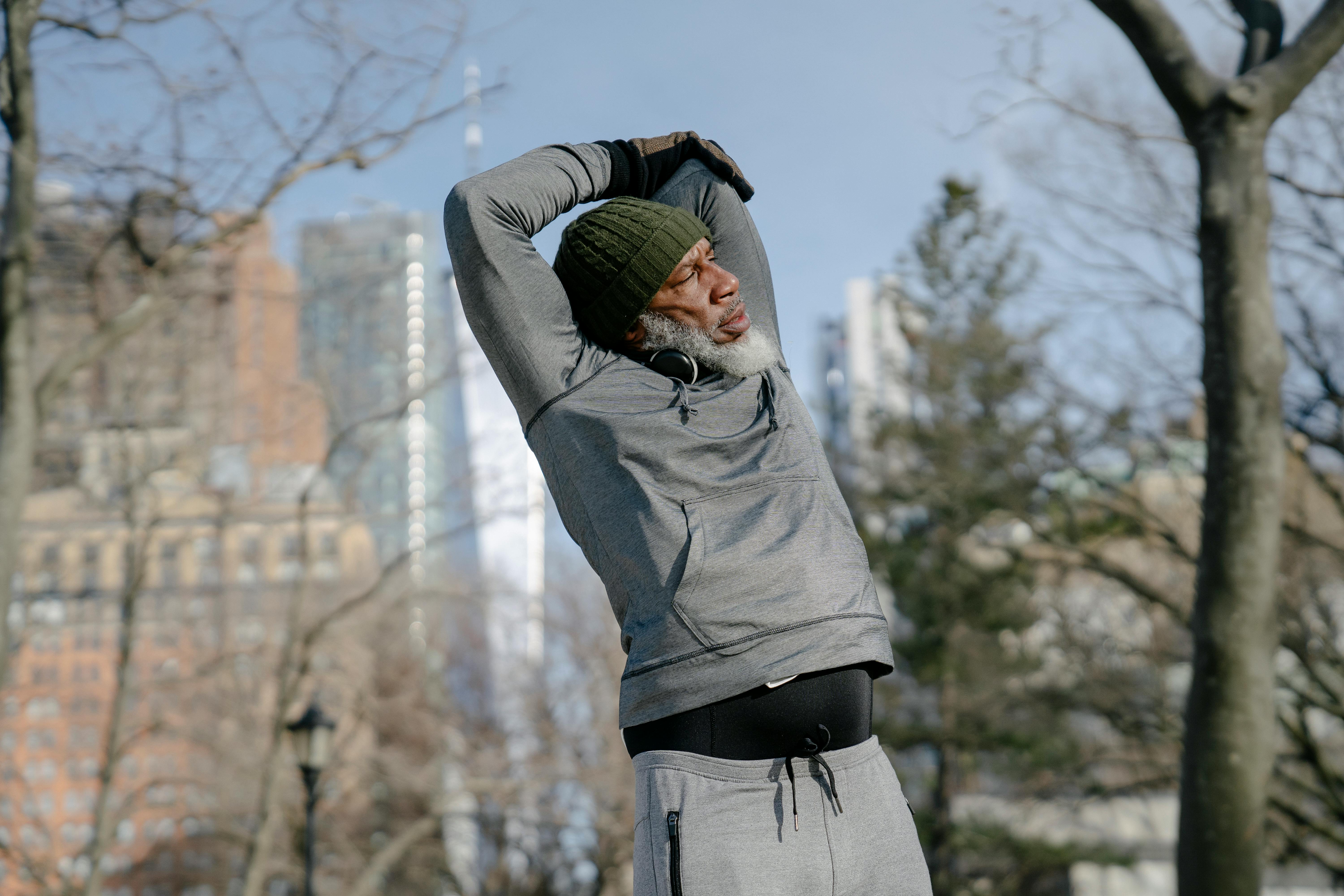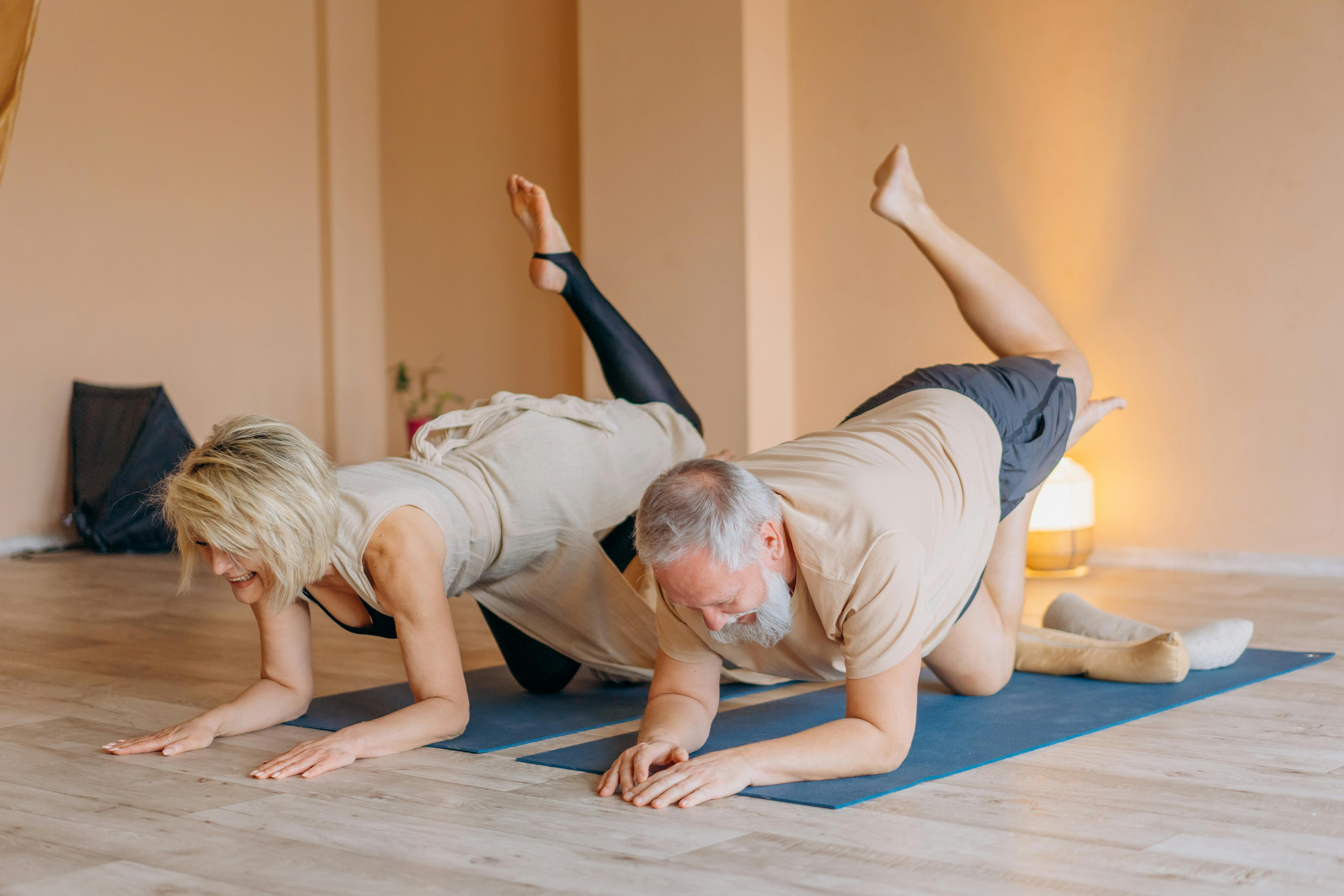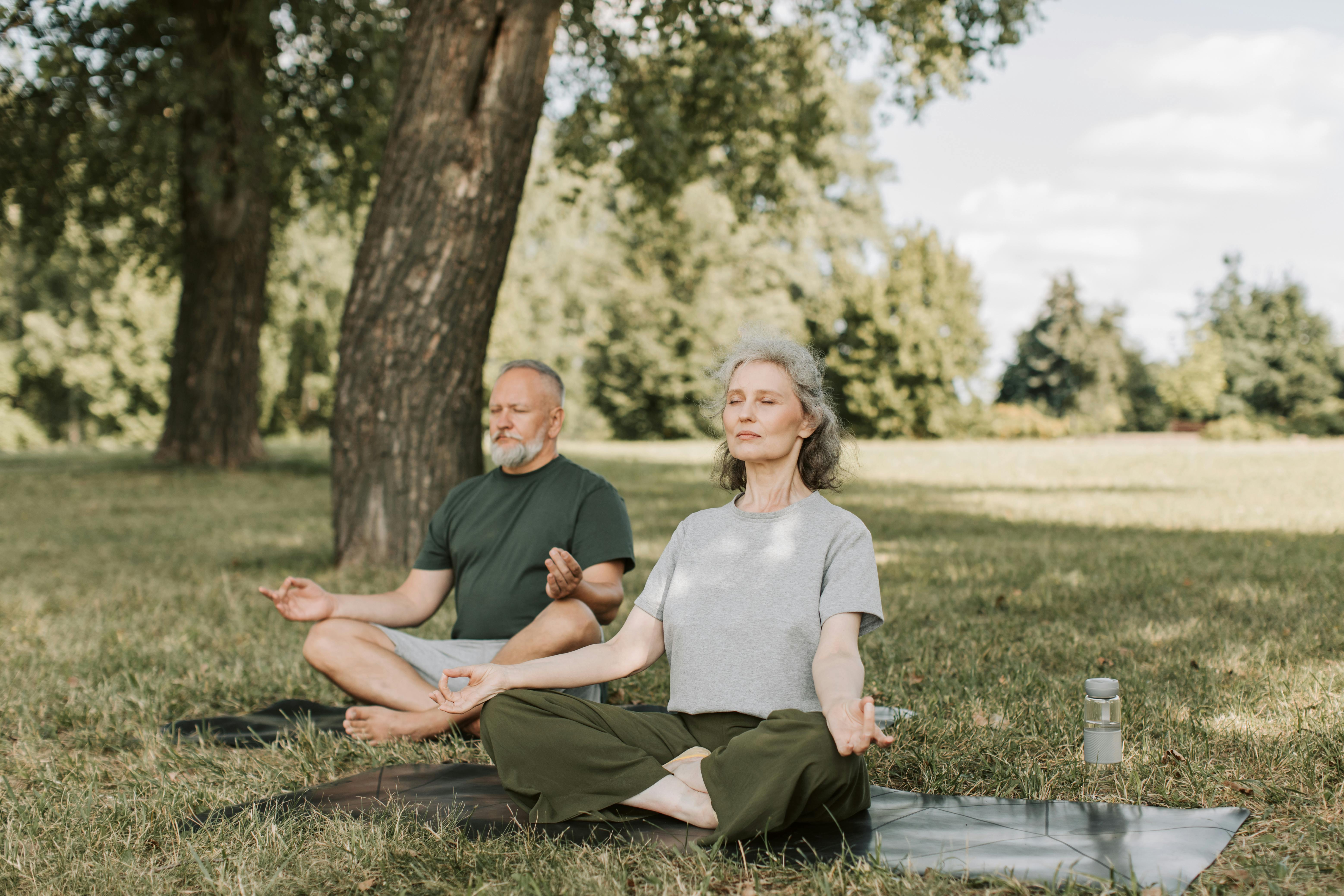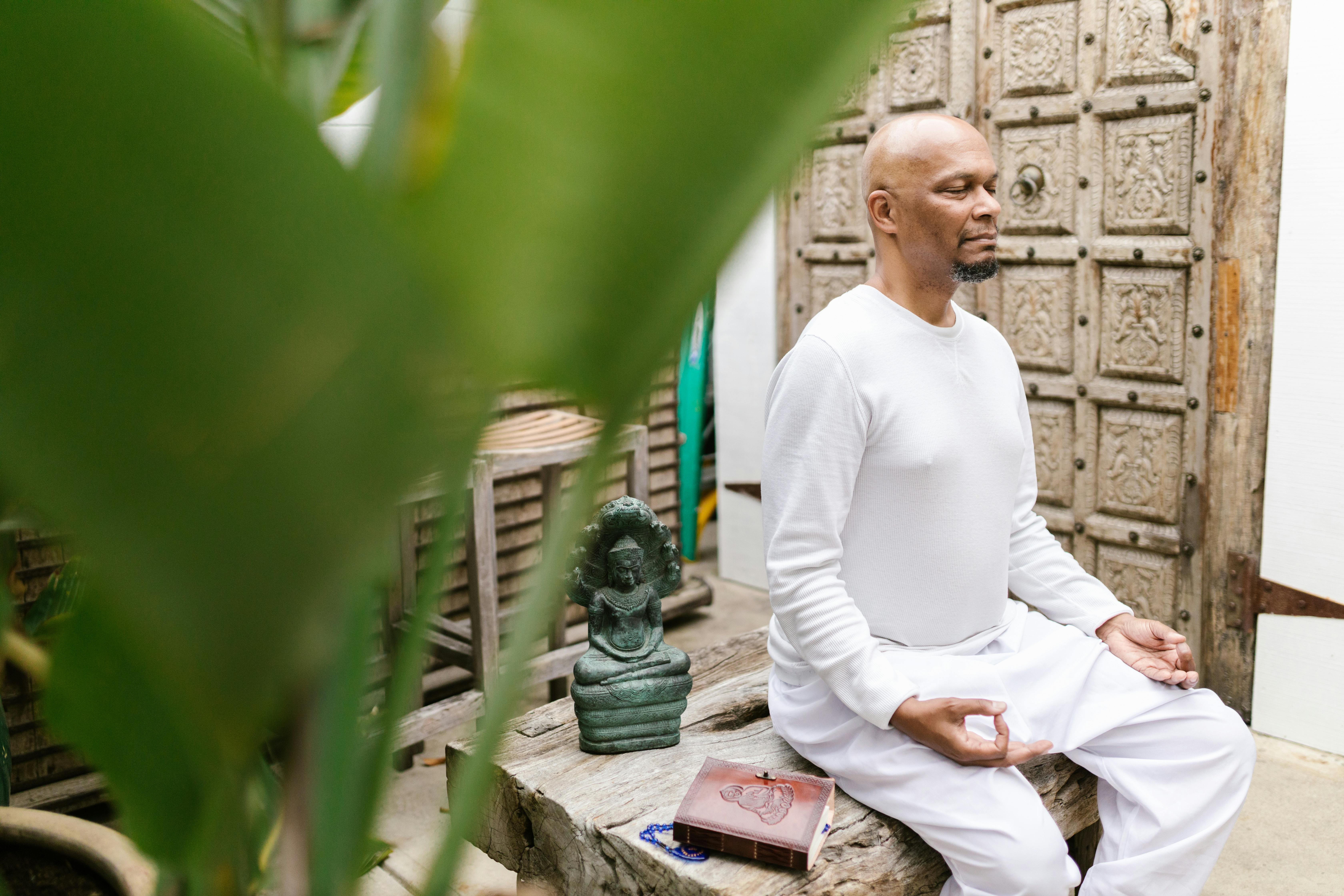Arthritis is one of those things that can turn even simple movements into challenges. Daily tasks may be painful and moving around can take more planning than it used to.
Currently, there’s no known cure for arthritis. Many people look for relief anywhere they can find it, from medications to various alternative therapies, including yoga.
I know that yoga is often unfairly touted as a cure-all—for mental health issues, stress, weight loss, and even constipation—when it’s actually mostly recommended as adjunct therapy. So, how much truth is there to the claim that yoga can help people struggling with arthritis? Can it actually offer some relief?
Yoga combines gentle movements, strength-building poses, and stress-release techniques that can offer relief for certain individuals suffering from arthritis and in specific circumstances. It can also significantly help with our perceptions of pain and attachment to our physical bodies. By creating some distance in the mind through yoga and meditation practices, we can often breathe a little easier in day-to-day life.
Let’s look at how it all comes together and how yoga can help people with arthritis.
Understanding How Yoga Helps Arthritis
Arthritis is an umbrella term for a common but complex family of musculoskeletal disorders. The family consists of more than 100 different diseases or conditions that can affect people of all ages, races, and genders.
The common thread among these conditions is inflammation, which can cause pain, stiffness, swelling, and eventually, loss of function in the joints.
There are several different types of arthritis, including:
- osteoarthritis – most common, more prevalent in aging individuals, where the cartilage that cushions the joints wears away;
- rheumatoid arthritis – an autoimmune disease in which the body’s immune system mistakenly attacks the joints;
- juvenile arthritis – arthritis diagnosed in children and teenagers under 16 years of age, involving inflammation in more than one joint;
- psoriatic arthritis – inflammation in the joints that also affects the skin and is associated with the skin condition psoriasis.

How Yoga Offers Arthritis Relief
As a holistic approach to health and well-being, yoga has gained popularity as a therapeutic activity for many different conditions, including arthritis.
The benefits of yoga for people suffering from arthritis come from asana practices, breathing techniques, and meditations. Here’s what research has found so far.
1. Improved Joint Flexibility and Mobility
Yoga, particularly hatha yoga, has been shown to improve joint and spine mobility. A pilot study published in the Alternative & Integrative Medicine journal in 2014 found that regular hatha yoga practice boosts muscle strength and soft tissue flexibility around the joints.
For those with arthritis, this means easier and less painful movements, alleviating some of the stiffness that often comes with the condition.
2. Strengthening Muscles for Better Support
While some people believe yoga to be a gentle stretch, research confirms that you can also build stronger muscles with regular asana practice. According to a 2022 study, yoga exercises can increase the range of motion of spinal joints and enhance muscle strength in the elderly, which supports the joints and leads to better stability.
The added muscle support minimizes the risk of injury and removes some of the pressure on the joints.
3. Pain Management
Finding an effective therapeutic approach to pain management is one of the most important approaches for people with arthritis, as doing so can significantly affect their quality of life.
Yoga offers a helping hand in this aspect as well. A systematic review published in 2016 in the Evidence-Based Complementary and Alternative Medicine journal assessed yoga’s impact on reducing pain and improving mobility in patients with knee osteoarthritis.
The results were in favor of yoga as an effective approach to pain management.
Classes such as Tianne’s Yoga for Pain Care are specifically designed to address these needs. These sessions focus on slow, deliberate movements that are safe for sensitive joints, offering a way to stay active without exacerbating pain.

4. Improved Proprioception
Regular yoga practice can also improve proprioception—the body’s ability to perceive its own position in space, which is vital for balance and coordination.
In a study from 2016, researchers were able to show that just 10 weeks of regular yoga practice improved flexibility and balance, which in turn increased proprioception.
For people living with arthritis, this improvement in proprioception is incredibly beneficial. It helps with mobility, reduces the risk of injuries, and helps people be more in tune with the sensations coming from their joints. In fact, another study published in the Journal of Physical Therapy Science found that exercises that increase proprioception are effective in improving muscle function and reducing pain among arthritis patients.
5. Reduced Inflammation
Chronic inflammation is a common feature of arthritis, and this often results in severe discomfort, pain, and mobility issues.
A recent study published in Frontiers in Bioscience-Elite investigated how various forms of yoga, like Japa yoga and Karma yoga, may reduce inflammation in people who experience rheumatoid arthritis.
The research highlighted yoga’s role in managing inflammation symptoms through its holistic approach to health and well-being.

Yoga and Pain Management When Dealing With Chronic Illness
Arthritis is a chronic condition that can sometimes be discouraging and exhausting to manage. This is why pain management strategies are an absolutely vital element of one’s therapy. Yoga helps in two ways: by providing physical relief through gentle movements and by promoting mental well-being through mindfulness and detachment from pain.
Since the study we linked above addressed the former, let us say a few words about the latter as well.
The Mind-Body Connection
One of the key benefits of yoga is its ability to help separate the mind and body experiences. Chronic pain can often lead to a cycle of discomfort and anxiety, but yoga helps break this cycle by fostering a mindful approach to pain.
Practices such as breath awareness and meditation can help individuals in learning to observe their pain without becoming overwhelmed by it. This detachment can reduce the emotional impact of chronic pain, making it easier to cope.
Meditation classes focusing on detachment are particularly beneficial. They teach techniques to observe sensations in the body without judgment, which can diminish the perceived intensity of pain. It may help individuals living with arthritis to develop a more balanced and less reactive relationship with their pain.
Best Yoga Practices for Arthritis
While there are many ways in which yoga can offer relief for arthritic symptoms, you must also be careful to follow the best practices and advice of your healthcare provider and to learn what kinds of movements or activities you should avoid for your specific symptoms.
What Are Suitable Yoga Poses for Arthritis?
Some yoga poses are particularly good for arthritis. These are typically asanas with low impact that focus on building strength and flexibility without putting too much stress on the joints.
However, while these asanas are considered generally safe, the outcome would still very much depend on the severity, location, and type of arthritis you have. Everyone is different, so listen to your body and don’t do anything that hurts.
- Mountain pose (tadasana)
- Forward fold (uttanasana) and its assisted and/or seated versions
- Cobra pose (bhujangasana)
- Spinal twist (supta matsyendrasana) and also the seated version
- Bridge pose (setu bandha sarvangasana)
- Child’s pose (balasana)
- Cat-cow stretch (chakravakasana)
- Warrior I and II (virabhadrasana)Corpse pose (savasana)
Important to remember: Modifications and props are your best friend! Almost any pose can be made to fit any body’s needs with the right tools and directions. For instance, in one of our recent videos, our instructor Julia Crouch gives tips on how to do wrist pain modifications. Watch it here on Instagram or Facebook.

What Yoga Poses to Avoid for Arthritis
Some asana practices ask too much of your joints and can make arthritic pain worse.
That’s why you need to be careful.
Avoid poses that require you to put too much weight on one or two joints, such as balancing on one leg, or standing on your arms. Also, avoid poses that require you to go over the range of motion that’s comfortable to you, such as in intense stretches or twists.
Giving more specific advice than this is tricky and depends on the type of arthritis you have, as well as what joints are affected. For instance, warrior I and II are great asanas for strengthening and stabilizing your ankles, but if you have hip or knee arthritis you might want to avoid them if you feel discomfort or pain. Always listen to your body.
Similarly, asanas that put pressure on the wrists like crow pose, chaturanga, and even downward dog might be better skipped or modified. These poses are often at the top of the “avoid at all costs” list for people experiencing arthritis, but, if you’re suffering from hip and knee arthritis and your wrists are pain-free, you might actually enjoy them.
Be aware that meditation or breathing sessions, such as those in some Kundalini classes, can be difficult for some people with arthritis to sit through.
Bottom line: Follow the advice of your healthcare provider, find an experienced yoga teacher who can help you personalize your practice, and never do anything that hurts! Because yoga is just a tool, like a hammer—you can use it to drive a nail into the wall or hurt your fingers if you’re not careful.
Recommended Classes
If you’re new to yoga, it might be easier to start when you have an experienced yoga teacher to guide your movements.
For people experiencing arthritis, we recommend the following classes:
Yoga Tools and Accessories for Arthritis
When it comes to arthritis, yoga props are almost a requirement, and chair yoga is like the holy grail.
Chair yoga emerged as a gentler and more accessible asana practice for people experiencing mobility and joint issues. And, spoiler alert, the main prop used to modify the poses is a chair.
The purpose of chair yoga is to make yoga accessible to everyone, regardless of their physical condition. As the chair becomes an extension of the body, it stabilizes and gives support in twists, bends, forward folds, and even mild backbends.
There are also yoga blocks, straps, bolsters, blankets, and balls. All these tools can help you modify the pose and make it more comfortable. You can use them to support your aching joints, while still working on stretching and strengthening the surrounding muscles.
Here again, working with a yoga instructor who has experience in teaching people with arthritis can help you learn how to integrate these tools into your practice.

Integrating Yoga With Other Arthritis Treatments
Integrating yoga into a broader arthritis treatment plan can be a smart move, but it’s one that should be approached carefully. There are a myriad of different treatment options out there—from medications and physical therapy to diet changes and even surgery for some.
As one piece in a large puzzle, you need to make sure that your yoga practice will complement the other therapies, not hinder them. For instance, you may be advised not to practice for some time after surgery or that certain pain medications would make it more dangerous for you to do certain styles of practice. Being able to feel the pain, no matter how uncomfortable, is a protective mechanism. If you overwork a joint because you feel no pain (due to medication), it could worsen your inflammation.
This is why it’s always a good idea to chat with your doctor before you start. Once you get the green light, finding a yoga class that works well for you as well as a teacher that understands your needs is the next most important step. Personalization and body awareness are key.
Then, think of the timing. Yoga can be a great way to warm up your body in the morning when stiffness tends to be at its worst. Or, you might find it helpful as a way to wind down in the evening. Listen to what your body needs in order to add it as another tool that strengthens the effects of your primary therapy.












